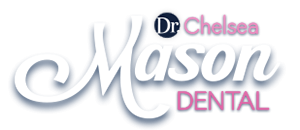What is the Most Prevalent Chronic Childhood Disease?
by Dr. Chelsea Mason
Dental decay, or a cavity, is the most prevalent chronic childhood disease in the United States. More common than the cold or flu! Decay is a modern health epidemic and, in most cases, it can be prevented. There is not a vaccine for it, which makes it even more important to prevent this widespread disease. Dental decay is so pervasive in modern society that it has become almost a rite of passage for children, that they will inexorably experience it and require fillings, extractions or other dental treatment. However, we need to remember that decay – a cavity – is generally preventable!
Why do we get decay? Generally, it is linked to our poor diet. The disease presented after the Industrial Revolution only 150 years ago when processed, sugary and high carbohydrate foods became prevalent, widespread and accessible. Our change in diet created a change in our oral bacteria, which causes the breakdown.
The change in our diets to one that was more carbohydrate and sugar-based created a breeding ground for a different oral bacterium, Streptococcus mutans. S. mutans is associated with cavities; it feeds off of the sugars and carbohydrates that we consume. An acid is created in the mouth that eats our tooth enamel (the outer layer) and rots our teeth. Humans are not born with S. mutans in their bodies; the bacterium is passed from mothers and fathers during infancy. Hence, it is paramount for parents to have healthy mouths, too.
In nature and in the wild, dental problems rarely present themselves. Furthermore, people who move to the United States from underdeveloped countries often develop decay because of the Western diet they are exposed to; these people were not affected by it prior to moving to the United States. Our diet influences whether or not we get cavities!
Children are not the only ones with troubles. Adults who experience dry mouth are at a greater risk for developing cavities. Over 400 medications have xerostomia, or dry mouth, listed as a side effect. Dry mouth creates an acidic environment where S. mutans flourishes and contributes to the breakdown of our teeth. Saliva serves as a buffer and reduces the acidity in the mouth. Adults with little saliva are at greater risk for decay.
This information begs the question: What can we do to prevent cavities?
Below are some general guidelines:
- Brush your teeth twice daily for at least two minutes with a fluoridated toothpaste.
- Invest in a powered toothbrush to more effectively remove plaque (the sticky film) on teeth compared to a manual toothbrush.
- Clean between your teeth daily with floss to prevent decay; remember to floss first and then brush.
- Rinse your mouth with a fluoridated mouth rinse.
- Avoid frequent snacking and sipping. Whenever you eat or drink beverages other than water, you help the bacteria in your mouth create acids that rot your teeth. If you snack throughout the day, your teeth are under constant acid attack.
- Do not consume pop or other sugary beverages. Or, if you do, drink these beverages through a straw or rinse with water immediately after consuming to reduce the acid exposure to your teeth.
- Eat a healthy and well-balanced diet; avoid highly processed foods.
- Drink tap water. Our public water has added fluoride, which can help reduce tooth decay. Do not only drink bottled water.
- Eat tooth-healthy foods. Avoid foods that get stuck in grooves and pits of your teeth. Healthy foods like fresh fruits and vegetables increase saliva flow. Unsweetened coffee, tea and sugar-free gum help wash away food particles.
- Consider fluoride treatments. Your dentist may recommend fluoride treatments, especially if you are at risk for developing decay.
- Discuss the need for dental sealants with your dentist. Dental sealants are protective coatings applied to the chewing surfaces of the back teeth to prevent decay.
- Ask about antibacterial treatments. If you’re vulnerable to tooth decay because of a medical condition, then your dentist may recommend an antibacterial mouth rinse to reduce harmful bacteria in your mouth.
- Ask your dentist about prescription-strength fluoridated toothpaste. This toothpaste contains more fluoride than the over the counter toothpaste and is more effective at reducing dental decay.
- Chew xylitol-based sugar-free gum.
- Visit your dentist regularly for professional cleanings and oral examinations.
It is our responsibility to help reduce the most common chronic disease in children and prevent its prevalence in adults, too. Together, we can reduce and eventually defeat dental decay!

